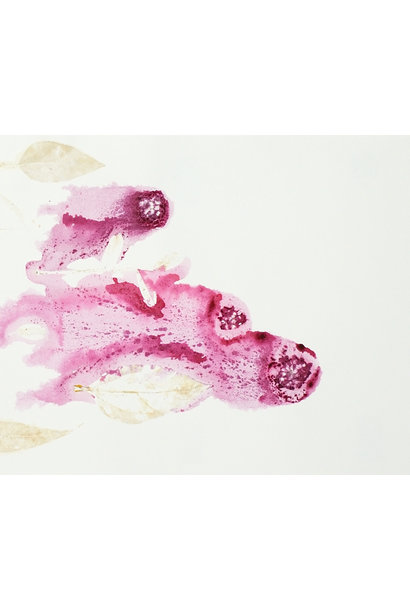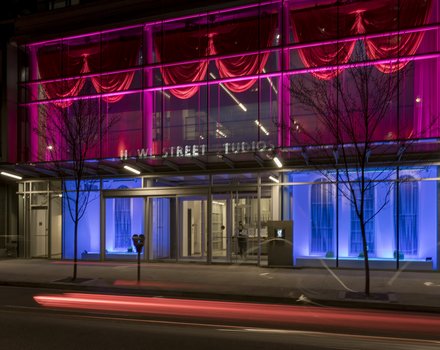

Derek Dunlop “Forms of Place”, Derek Dunlop
C$ 0.00 Excl. tax
"The artworks in the exhibition speak to the way in which the history of queer people continually haunts the present... [reminding] us that nature has historically been both a site of escape from execration and a locus for finding community." More below
- File number: EXHI1064
...
“For groups constituted by historical injury, the challenge is to engage with the past without being destroyed by it. Sometimes it seems it would be better to move on—to let, as Marx wrote, the dead bury the dead. But it is the damaging aspects of the past that tend to stay with us, and the desire to forget may itself be a symptom of haunting…The dead can bury the dead all day long and still not be done.”
- Heather Love
Forms of Place is part of an ongoing series of works that engage with how natural spaces, queer behaviours, and capitalism are all entangled in a recurring state of becoming. The artworks in the exhibition speak to the way in which the history of queer people continually haunts the present. An accumulation of discarded and decaying metal dug from an area on the banks of the Assiniboine River, which was formerly a popular cruising trail for men, is staged on whitewashed pine shelving that hovers a few inches off the gallery floor. Kinky sticks are adorned and bound with elastic bands, metal wire, and zap straps. Unframed monoprints created using flora found at a popular cruising trail in Stanley Park are hung on the walls without the use of any visible hardware. This exhibition uses found objects that conjure queer activity to highlight the relationship between nature and culture.
For several years, Dunlop watched the exhuming effect of cyclical flooding and receding on the Assiniboine riverbed. When the muddy grounds were traversable, the metal artifacts emerged as leftovers or unwanted remainders estranged from the process of industrialization. The biological, mineral, and chemical growths on the metal enchant a subtle alchemy of place. They embody a unique creative medium that signals, yet is distinct from, the human.
Existing between the effects of natural and manmade processes, there is a haunting quality to the bark-like oxidized metal adorned with crystals, caked with soil, and appended with shards. The arrangement obscures any attempts to reclaim archaeological, museological, or utilitarian value—the fledging design charges them with a more intimate position that attempts to remember something that could easily be forgotten. Queer spaces have made a habit out of disappearing. Because of transformative projects related to gentrification, technological development, and other shifts in culture, cruising in parks has become less prominent.
Dunlop spent many days walking through trails, retracing steps, spending time with gay men from a previous generation, and foraging for a collection of queer things. Queer culture is not easily transferred from one generation to the next—one needs to seek it out, create unique routes of communication, and eventually claim a history that fits. Creating improvised compositions on the printing plate, Dunlop imagines the printing press to be a kind of medium that has the ability to commune with the dead. When the objects get pressed into the paper, they channel the beyond by unleashing invisible, microscopic, and unknown ooze. This series of prints becomes the material evidence of Dunlop’s process of making contact.
How do these spaces become haunted by the dead? What is the drive that makes one return to these spaces? What do we hope to achieve by channeling the beyond? In responding to these questions, Avery Gordon’s theory of haunting seems relevant in describing some of the characteristics of this impasse. She uses the term haunting to describe a condition “…in which a repressed or unresolved social violence is making itself known…” She notes that “…the term haunting [can] describe those singular yet repetitive instances when home becomes unfamiliar, when your bearings on the world lose direction, when the over-and-done comes alive…” Moreover, she describes how hauntings alter one’e experience of linear time: “…disturbed feelings won’t go away…the present seamlessly becoming ‘the future’ gets entirely jammed up.”
Although queer sexuality increasingly penetrates the mainstream to the extent that cruising in forests has been replaced and capitalized by cruising on the web, the history of these inconspicuous places reminds us that nature has historically been both a site of escape from execration and a locus for finding community. In times when men were forbidden from having sex with men because it was deemed to be unnatural, gay men turned toward nature. The objects found in this exhibition suggest that nature is often a product of and reaction to culture. Although attitudes around normative and non-normative behaviour are shifting, remnants of the past are continually resurfacing. Forms of Place has evolved from Dunlop’s personal and shared experience of living within a changing, unresolved, and vulnerable political moment.
- Derek Dunlop & Justin Muir
Works cited
Gordon, Avery. Some Thoughts on Haunting and Futurity. Borderlands: Volume 10, number 2. The University of California, Santa Barbara. 2011.
Love, Heather. Feeling Backward: Loss and the Politics of Queer History. Harvard University Press, Cambridge. 2009.
Similar
If you're interested in this, you might like this too
Recently viewed
-
 Favoriten
Add to cart
Favoriten
Add to cart
Derek Dunlop “Forms of Place”, Derek Dunlop
C$ 0.00 Excl. tax







